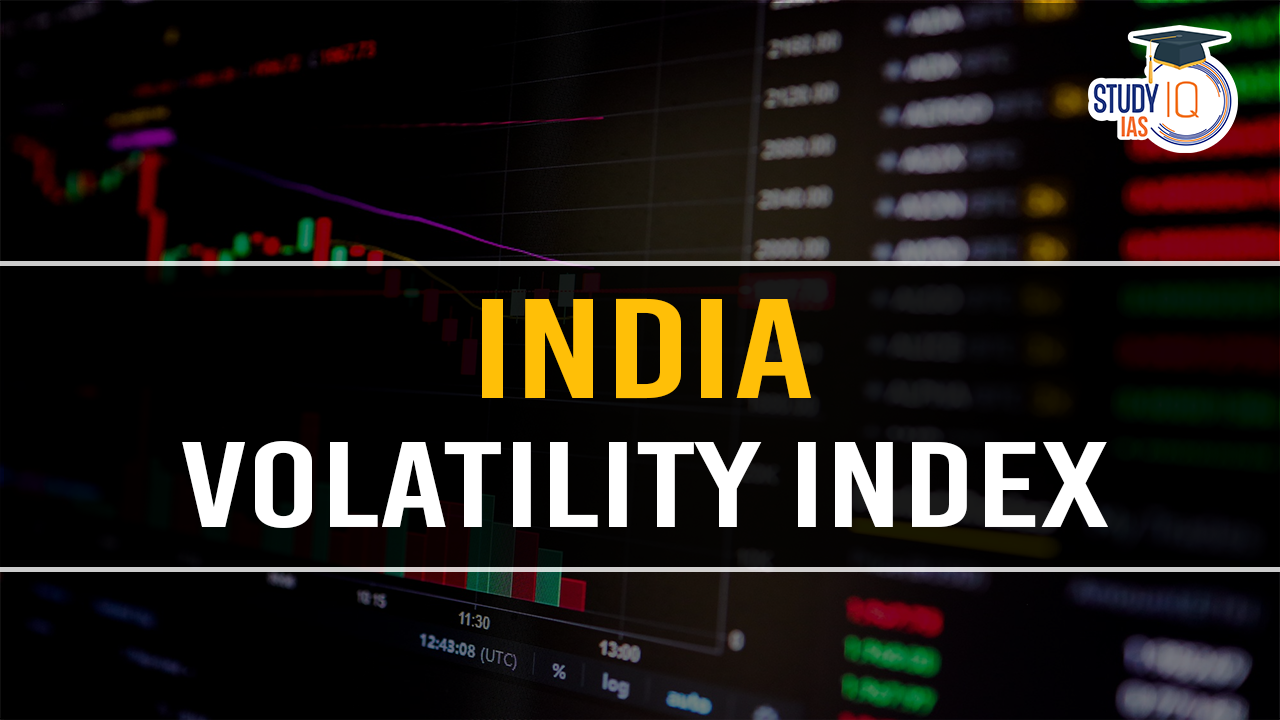Table of Contents
Context: The India VIX experienced a significant surge of approximately 53%, reaching a peak of 21.88.
What is the Volatility Index?
The Volatility Index (VIX), also known as the Fear Index, measures the market’s expectation of volatility over the near term. Volatility is often described as the rate and magnitude of changes in prices and is considered a measure of risk.
- Behaviour: During periods of market volatility, the index tends to rise, indicating increased market movements. As volatility subsides, the index declines.
- Calculation: The VIX measures the expected fluctuation of an underlying index, such as the S&P 500, over the near term, expressed as annualised volatility in percentage terms.
- History: Introduced by the Chicago Board of Options Exchange (CBOE) in 1993, initially based on the S&P 100 Index options. The methodology was revised in 2003 to be based on S&P 500 Index options.
- Usage: It has become an indicator of market sentiment about volatility and is used by investors to guide investment decisions.
What is India Volatility Index (VIX)?
- India VIX is a volatility index calculated by the National Stock Exchange (NSE) based on the order book of NIFTY Options.
- Uses the best bid-ask quotes of near and next-month NIFTY options contracts traded on the NSE’s F&O segment.
- Reflects investor perception of market volatility over the next 30 calendar days.
- Higher India VIX values indicate higher expected volatility.
- ‘VIX’ is a trademark of the CBOE, licensed to the NSE by Standard & Poor’s.
Why has India’s VIX surged?
- Recent Surge: In May, India’s VIX increased by around 53%, touching a high of 21.88. On one day, it soared 16% to reach 21.48 before closing at 20.6.
- Market Movements: The BSE Sensex rose 998 points from intraday lows, ending 112 points up at 72,776.13. NSE’s Nifty ended 48.85 points up at 22,104.05 after nearly a 1% intraday decline.
- Factors:
- Concerns over election results to be declared on June 4.
- Lower voter turnout potentially impacts BJP’s seat count.
- Heavy selling by foreign portfolio investors, who sold Rs 18,375 crore of Indian equities by May 13.
| Other Important Articles | |
| List of Stock Exchanges in India | Difference Between BSE and NSE |
| Stock Market | Financial Marke |


 Places in News for UPSC 2025 for Prelims...
Places in News for UPSC 2025 for Prelims...
 Growth in Gold Loans and NPAs, Reasons a...
Growth in Gold Loans and NPAs, Reasons a...
 New Phase of Operation Chakra to Combat ...
New Phase of Operation Chakra to Combat ...





















